The Persian Gulf is a waterway that runs along the Sea of Oman between Iran and the Arabian Peninsula. It covers an area of 237,473 km2 and is the third largest in the world after the Gulf of Mexico and the Gulf of Hudson. From east, Persian Gulf is connected to to the Indian Ocean and the Arabian Sea through the Strait of Hormuz and the Sea of Oman. Persian Gulf is bordered by Iran, Oman, Iraq, Saudi Arabia, Kuwait, the United Arab Emirates, Qatar and Bahrain. Meanwhile, the northern shores of the Persian Gulf are all part of Iran’s political geography. Due to the rich oil and gas resources in the Persian Gulf and its shores, this waterway is considered an important and strategic area at the international level.
The historical name of this gulf, in various languages, has been the translation of the phrase “Persian Gulf” or “Persian Sea“. Also, in all legal international organizations, the official name of this bay is “Persian Gulf”, but some Arab countries have recently tempted to call it the “Arabian Gulf” or simply the Gulf. The International Hydro-graphic Organization (IHO) uses the name “Iranian Gulf” for this bay.
This body of water has played a significant role in the history, politics, and economy of the countries that surround it. In this article, we will embark on a journey to explore the Persian Gulf, its fascinating features, and the experiences it offers to visitors and residents alike.
Geology of the Persian Gulf
Geologists believe that about 500,000 years ago, the primitive form of the Persian Gulf was formed along the southern plains of Iran, and over time, due to changes in the internal and external structure of the earth, it found its current constant form. Its unique formation can be attributed to the tectonic forces that have shaped the Earth’s crust.
The Origin
The Persian Gulf was formed as a result of the collision between the Arabian Plate and the Eurasian Plate. Over time, the convergence of these plates led to the creation of a depression that filled with water, giving birth to the Persian Gulf as we know it today. The intricate geological processes involved in its formation have endowed the region with diverse landscapes, marine ecosystems, and geological formations.
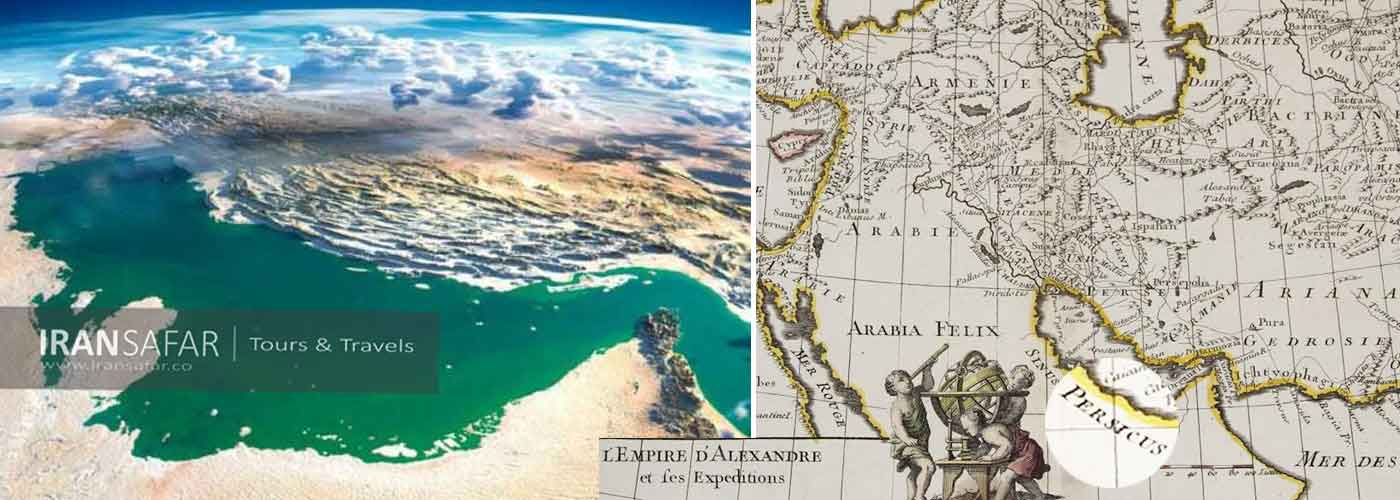 Persian Gulf Old Map in French – 1748
Persian Gulf Old Map in French – 1748
The present-day Persian Gulf, together with its northwestern continuation now infilled by the deposits of the Mesopotamia rivers –Tigris and Euphrates– is the remains of a once much larger basin of deposition aligned northwest to southeast that existed throughout much of geologic history.
In the beginning, the Persian Gulf was so vast that by the end of the third geological period, most of the plains of Borazjan, Behbahan, and Khuzestan of Iran were submerged up to the Zagros Mountains. In this basin vast quantities of sediments accumulated—mostly limestone and marls (a mixture of calcareous and silicate mud), together with evaporites and organic matter—which ultimately produced the area’s extensive oil resources.
The Wonders of the Persian Gulf
The Persian Gulf is a captivating destination that combines natural beauty, cultural heritage, and modern marvels. From its mesmerizing coastlines and thriving marine life to its historical landmarks and vibrant cities, the region offers a wealth of experiences for visitors to explore.
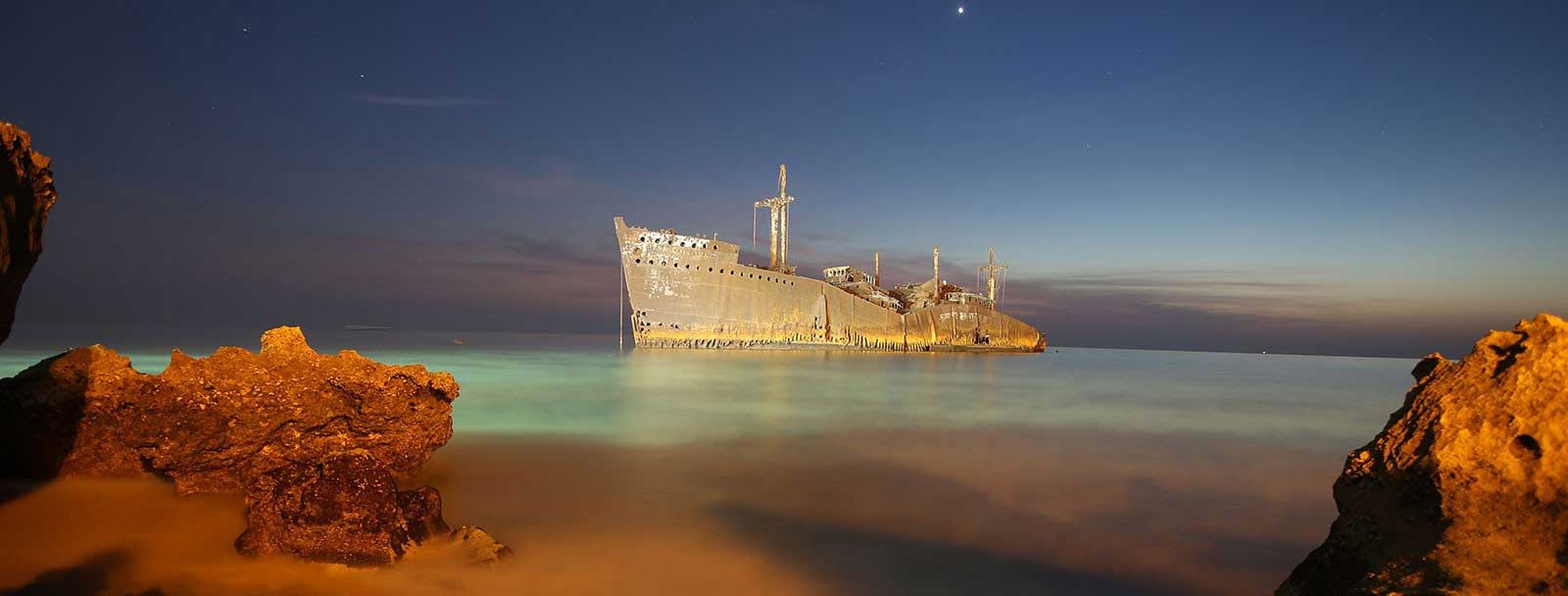 Left: Aground Greek Ship, Kish, Iran | Right: Hormuz Island Shore, Iran
Left: Aground Greek Ship, Kish, Iran | Right: Hormuz Island Shore, Iran
Coastlines and Beaches
The Persian Gulf boasts a plethora of picturesque coastlines and pristine beaches, offering a tranquil escape from the hustle and bustle of daily life. From the golden sands of Jumeirah Beach in Dubai to the coral beaches of Kish and Qeshm in Iran, there are countless spots along the coastline where visitors can unwind, bask in the sun, and take in the breathtaking views of the azure waters.
Climate
The climate of the Persian Gulf is dry and semi-tropical. Temperatures are high in summer and it sometimes reaches 50 degrees Celsius, so that the rate of evaporation would be higher than the amount of water input. Though winters may be quite cool at the northwestern extremities and the temperature is reported to be as low as 3 degrees Celsius.
In addition to the high salinity of the gulf, there are 200 freshwater springs on the bottom and 25 completely fresh water springs on its shores, all of which originate from the Zagros Mountains in Iran. The freshwater that enters the Persian Gulf is mainly confined to the runoff of the Zagros Mountains in Iran and the mountains of Turkey and Iraq.
Also Read : Iran Climate
Rich Cultural Heritage
The countries surrounding the Persian Gulf are home to ancient civilizations and rich cultural heritage. From the historical sites of Iran, such as Persepolis, to the Bahrain Fort and Qal’at al-Bahrain, to the traditional markets of Kuwait City, known as “souks,” visitors can immerse themselves in the vibrant cultures and traditions of the region. The Persian Gulf has been a melting pot of civilizations throughout history, and this is reflected in its architecture, cuisine, and traditions.
Modern Marvels and Urban Splendors
The cities along the Persian Gulf are renowned for their architectural marvels and modern urban landscapes. Dubai, for instance, is synonymous with its iconic skyscrapers, including the Burj Khalifa, the tallest building in the world. Abu Dhabi, the capital of the United Arab Emirates, boasts the magnificent Sheikh Zayed Grand Mosque, a masterpiece of Islamic architecture. These cities offer a blend of traditional and contemporary experiences, allowing visitors to witness the harmonious coexistence of the past and the future.
Persian Gulf Iranian Islands
There are many islands in the Persian Gulf, some of which are of little importance and some are strategical for the country economy. Most of these important islands belong to Iran such as Qeshm, Kish, Khark, Abu Musa, Tonb-e Bozorg, Tonb-e Kuchak, Hormuz and Lavan Island. Among these islands, more than 30 residential and non-residential islands belong to Iran. Some of these islands get regularly submerged due to the tide. These uninhabited islands are of special global importance as habitats for corals, nests of sea swallows and turtles, as well as habitats for migratory birds. The largest island of the Persian Gulf is Qeshm.
Qeshm Island
Qeshm Island, known as the largest island of Iran and of the Persian Gulf, is one of the islands of the Hormozgan Province and lies in the Strait of Hormuz. Qeshm Island has been considered one of the top tourist destinations in Iran in recent years. Qeshm is full of natural and extraordinary attractions which can’t be found anywhere in Iran. The natural and historical attractions, along with the culture of the island’s indigenous people have made a great number of visitors visit Qeshm as their destination of choice every year. Below we will get acquainted with the most important tourist attractions in Qeshm. Travel to Qeshm is feasible by sea and air. Qeshm has an international airport. It should be noted that this airport is a hub of Qeshm Airlines. Due to the weather conditions of Qeshm Island, the best time to travel to this island is in autumn and in winter. Qeshm in winter brings a mild climate experience with an average of 24 degrees Celsius.
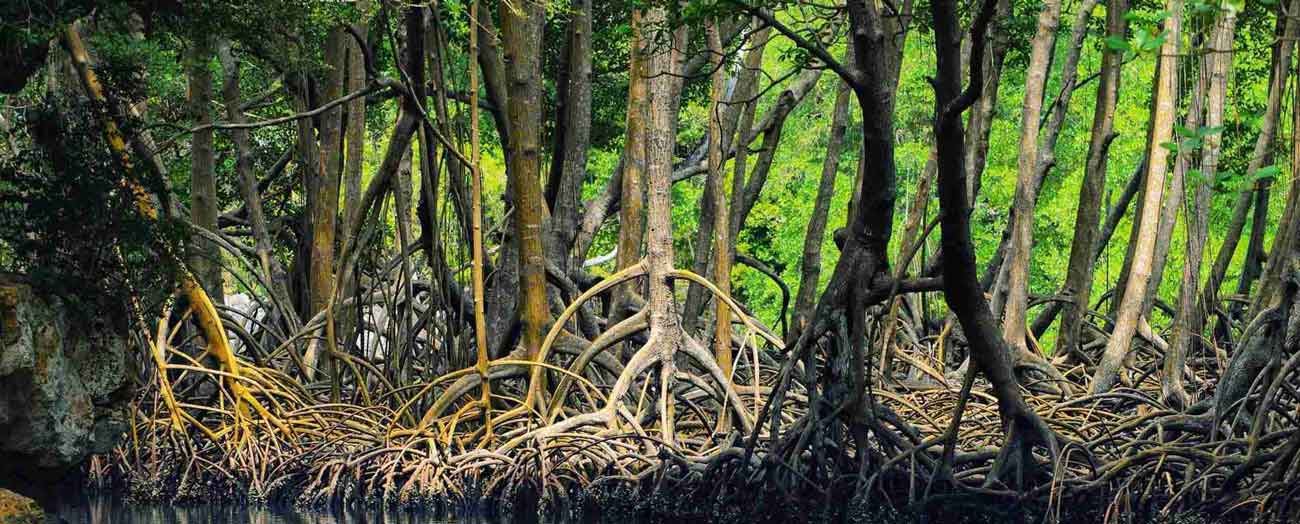 Mangrove forest, Qeshm island
Mangrove forest, Qeshm island
Mangrove forest of Qeshm gets submerged at night due to the tide, in the salty waters of the sea, and during the day it emerges from the water. Harra Forest has certain types of trees whose roots sweeten the salty water and feed the tree.
Also Read: Caspian Hyrcanian Forests
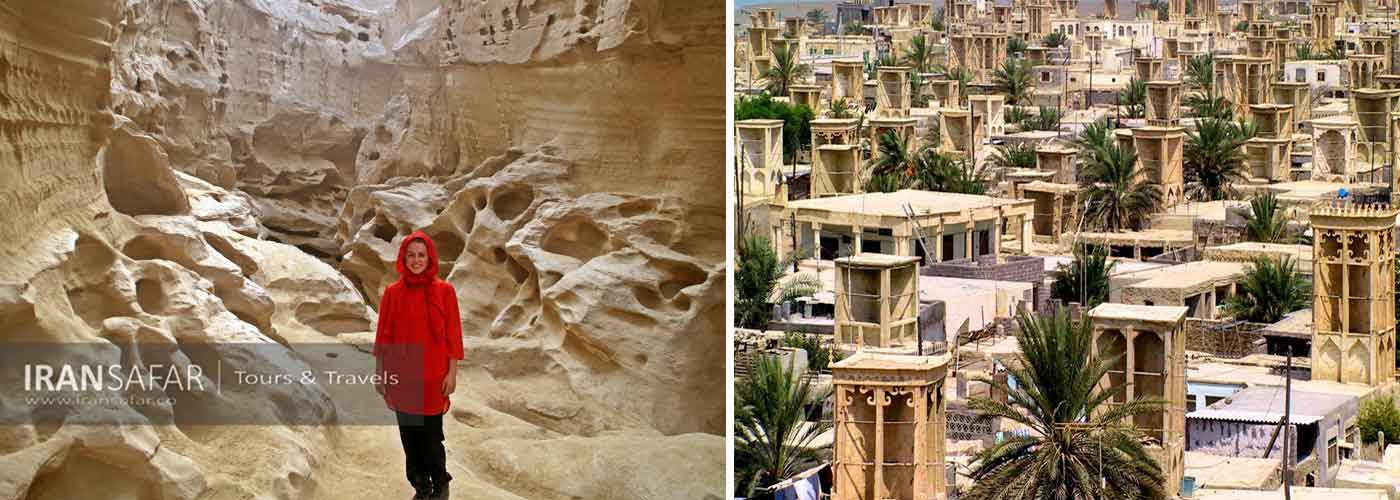 Qeshm Island, Iran
Qeshm Island, Iran
Hormuz Island
The island of Hormuz is refereed to as the small island of the Persian Gulf. It is a picturesque island full of different colors, with a completely different culture so that you enter another planet as you enter Hormuz. Hormuz Island, land of colors and wonders, boasts spectacular landscapes from colorful soils to extraordinary architecture, with a fascinating story to hear and a sight to behold. It is interesting to know that the soil of Hormuz can be seen in seventy different colors, an eatable soil with healing effects which is one of the wonders of this place. By the 14th century, the population of the island was 7,000 people, and Hormuz was known as a commercial city by the river Minab.
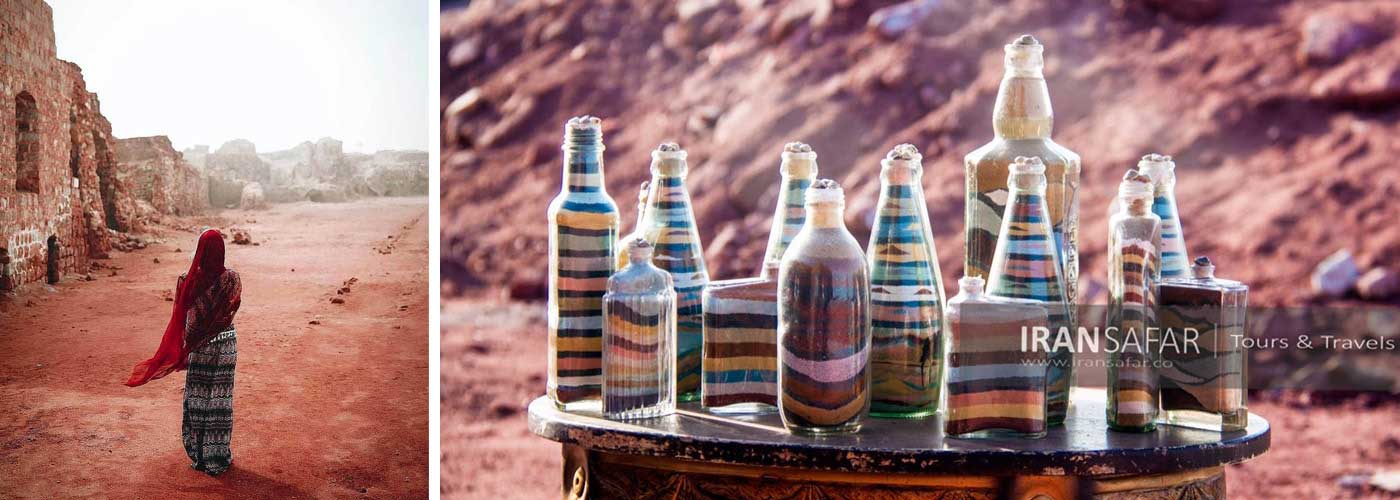 Hormuz Island, Iran
Hormuz Island, Iran
Hormuz Island is an oval-shaped island with an area of 42 square kilometers at the entrance to the Persian Gulf and 2 kilometers to Bandar Abbas. The island of Hormuz is considered the key to the Gulf because of its geographical location and its proximity to the Strait of Hormuz. It is in this context that Hormuz Island has historically been particularly important in Qeshm, both geographically and commercially. Colorful mountains, cliffs formed over millions of years of erosion, magnificent salt rocks and, most of all, red soil – these are spectacular attractions on the island of Hormuz, so traveling to Hormuz Island, especially in the cold seasons, can be the best choice for a pleasant and dreamy trip. Make sure to include Hormuz Island in your bucket list. The island will amaze you with its beauties.
Also Read: Iran’s natural Attractions
Kish Island
Kish Island, often called the Pearl of the Persian Gulf has an area of 90 square km (36 sq. miles). It is known for being a beautiful resort in the Middle East and in Iran. Kish Island has relaxed laws in comparison to the rest of Iran. Like mainland Iran, the people of Kish are friendly and hospitable. has a very hot climate due to geographical and regional conditions. In fact, summers on this island are very long and sometimes reach up to 95% humidity. In Kish you will rarely see rain except in winter and in the form of rainstorms. Therefore, it can be said that the best month to travel and stay in Kish is between January and May, where you can escape the cold in other parts of the country and seek refuge in the cool air of Kish. Interesting thing about Kish climate is that the oxygen on the island is pure that even pulmonary patients do not need to use oxygen capsules and this feature is only available in five locations around the world. The average annual temperature of this beautiful island is about 24 degrees Celsius. Most of the island’s vegetation is composed of palm trees, although native to the trees are Persian Kahur, Eucalyptus, Acacia and Albizia lebbeck. Most of the vegetation and trees in this area are resistant against heat and dehydration.
Persian Sea Life
The Persian Gulf is one of the largest habitats for marine organisms such as corals, small ornamental fish, edible and non-edible fish, oysters, snails, mollusks, sea anemones, sea sponges, Jelly fish, turtles, many dolphins and sharks. Environmentalists are concerned about endangered various species of mammals in the water pollution and lack of sufficient knowledge. Drought and lack of nutrients entering the water have caused some Persian Gulf aquatic species to remain underdeveloped.
Read: Wildlife of Iran
1
Persian Gulf Fish
907 different species of fish are found in the Persian Gulf. Most of the these aquatic animals live in salty waters, except for a few that enter the fresh waters of Karun, Bahman Shir and Arvand rivers, where they lay eggs and reproduce. The most important types of commercial fish in the Persian Gulf are Silver pomfret (Pampus argenteus), Indo-Pacific king mackerel (Scomberomorus guttatus), The narrow- barred Spanish mackerel (Scomberomorus commerson), Javelin grunt (Pomadasys kaakan), Redmouth grouper (Aethaloperca rogaa ), Parrotfish, Black pomfret, Drums (Sciaenidae), Ilish, Flounders, and Snappers. Other valuable food products in the Persian Gulf include shrimp. A variety of edible oysters are also found on some beaches, such as Bandar Abbas Beach and Gasheh Beach (Oyster Beach) in the port of Lengeh, as well as around some islands such as Hormoz, Qeshm and Lark, the main markets of which are European countries.
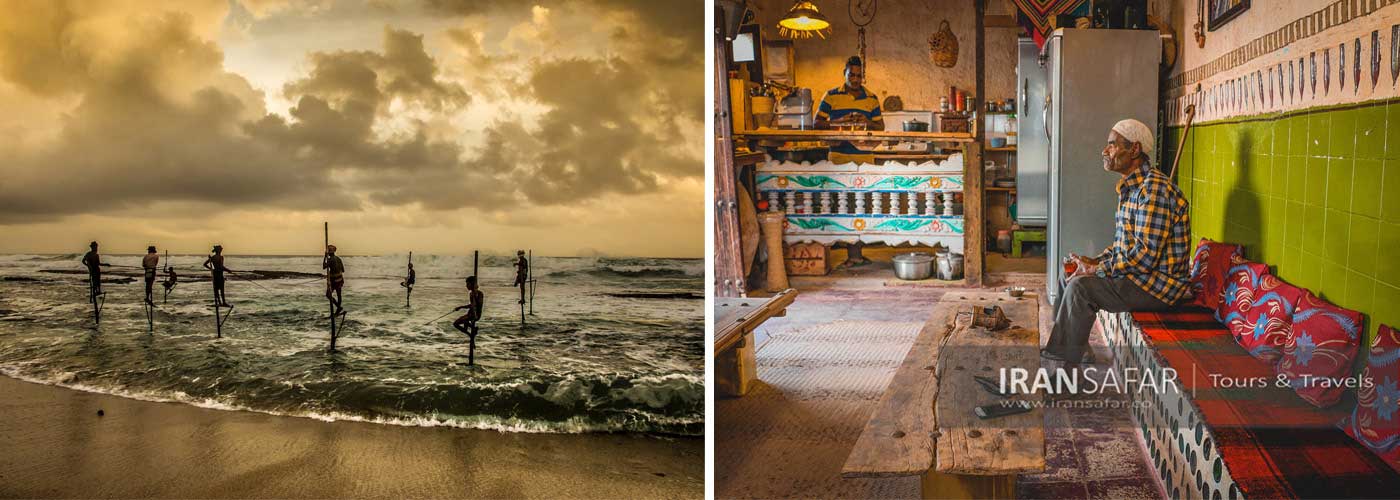
Iran is the largest fishery producer in the region, with a 2,440 km coastline along the Persian Gulf and Oman Sea, and a 740 km coastline in the north along the southern part of the Caspian Sea.There are many fish landing areas in southern Iran, distributed all along the coastline, and despite gradually increasing effort, the total catch has fluctuated in recent years.
2
Persian Gulf turtles
Five of the eight species of existing turtles in the world live in the waters of the Persian Gulf and the Sea of Oman. Two species of eagle turtles
and green turtles lay their eggs on the coasts and islands of Iran. These two turtles live on the coasts of islands such as Hormuz, Lark, Qeshm, and shallow coastal areas, and their main spawning sites are on the islands of Hormuz, Hengam, Farur, Shidur, Lavan, and Kish. Fishing activities, the presence of garbage, sewage and oil pollution is poisoning the Persian Gulf turtle population.
3
Persian Gulf dolphins and whales
Dolphins and whales are among the mammals that live in this gulf and the Sea of Oman. Bottlenose dolphins, as well as Porpoises live
in the south of Qeshm Island, near the islands of Hengam, Salarak and Hormuz – Places that are exposed to various dangers.
Lack of adequate research and lack of expertise have reduced the number of Humpback whales and gray whales. The collision of dolphins and whales with boats and their Propellers , as well as the pollution of some parts of the Persian Gulf with oil and chemical pollutants, threaten the lives of these mammals. According to some reports, the Persian Gulf whale is in danger of extinction.
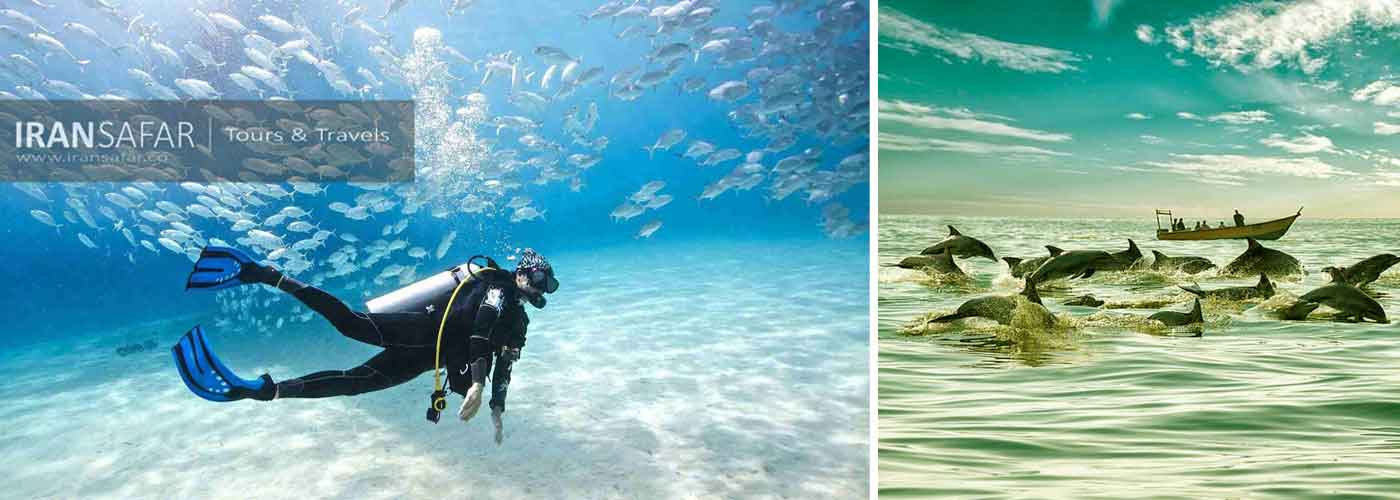 Left: Scuba Diving in Kish Island, Iran | Right: Hengam Island Dolphins
Left: Scuba Diving in Kish Island, Iran | Right: Hengam Island Dolphins
4
Sharks of the Persian Gulf
Sharks are a group of cartilaginous fish with a spindle-shaped body whose ancestors lived 450 million years ago. Sharks are one of the most valuable aquatic animals, which have long been chased for their profitable use of meat, vitamin-rich oils, fins, skin, and teeth. On the other hand, because of misunderstanding and unnecessary fear of this animal , they have been brutally invaded by humans.
These animals have the largest liver among all aquatic animals and use an organ called “Ampullae of lorenzini” to receive their prey’s electric field. The fish also have heat exchangers deep in their muscles that keep their body temperature above 10 degrees C more than the environment water heat.
Seven species of sharks live in the waters of the Persian Gulf, including Requiem sharks (Carcharhinidae), Long-tailed carpet sharks, whale sharks (Rincodon tidae), Scalloped hammed head (Sphranidae), Houndsharks (Triakidae), Zebra Sharks (Stegostomatidae) , and zebra sharks. Due to the high price of sharks compared to other fish in the Persian Gulf, overfishing has increased dramatically in recent years, putting their offspring at risk of extinction. Since most shark species living in the Persian Gulf are living, it is not possible to develop a good program to revive their offspring. Also, these sharks move to shallower bodies (which provide the lowest temperature for their offspring) at birth, and increasing the destruction of coastal areas is another threat to their offspring’s survival.
Rivers Flowing to The Persian Gulf
The Arvand, Karun, Jarahi, Mand, Dalaki and Minab rivers are the largest and most abundant rivers flowing into the Persian Gulf, most of which originate in the Zagros Mountains. In the southern coast, the number of waters entering the Gulf is very low, which has led to high carbonate sediments in this area. Due to its enclosure, the effect of the ocean on the gulf is very small, and therefore the speed of its lower and horizontal currents is very low, about 10 cm per second. The greater salinity of the Gulf than the ocean gives rise to the flow of water from the Indian Ocean to the Gulf, which runs parallel to the coast of Iran and in a counter-clockwise direction.
Why is the Persian Gulf important?
The biggest importance of the Persian Gulf is the existence of rich oil and gas resources on the the sea bed and its shores, so that this area is called the “World Oil Reservoir”. This Gulf is a transit route for oil from Iran, Iraq, Kuwait, Saudi Arabia and the United Arab Emirates, and is therefore an important and strategic region. About 30 percent of the world’s oil is supplied from this region, which sometimes increases and sometimes decreases. Oil produced in the Persian Gulf must be transported through the Strait of Hormuz.
In terms of oil resources, the Persian Gulf has many advantages over other parts of the world, such as ease of extraction, low production costs, excess production capacity, high quality of crude oil, ease of transportation, high production capacity of wells and the possibility of discovering new vast oil reserves. According to the latest statitstics, Persian Gulf reserves about 730 billion barrels of oil reserves and more than 70 trillion cubic meters of natural gas. There are also important ports on the Persian Gulf, including Bandar Abbas, Bushehr, Bandar Lengeh, Kish, Khorramshahr and Mahshahr port in Iran, and Sharjah, Dubai and Abu Dhabi in the United Arab Emirates, and the ports of Basra and Al-Faw port in Iraq.
Persian Gulf National Day
One of the steps taken by the Iranian government to protect the spiritual and cultural heritage of the Persian Gulf was to recognize the Persian Gulf National Day in the country’s official calendar. In this regard, in July 2005, the Supreme Council of the Cultural Revolution named April 29th, which coincides with the expulsion of the Portuguese from the Strait of Hormuz, as the National Day of the Persian Gulf.
The Portuguese, the Dutch, and the English were powerful empires in the 15th and 16th centuries, especially in the maritime sector. Each in turn dominated some of the islands on the Persian Gulf in different periods of time, and some ruled these areas for two centuries. The Portuguese were the first colonizers who invaded the Persian Gulf (late 15th century) and captured major parts of its islands and ports and turned them into their military and governance bases. Finally, during the rule of the Safavid Empire, Shah Abbas I sent an army to fight against the colonialists on the island of Hormuz and with the help of the local people, a brave commander called Imam Quli Khan succeeded in expelling aggressors and the Portuguese colonialists after many combats. It led to their defeat and expulsion from Hormuz Island and the Persian Gulf. On this occasion, the 29th April, which is the anniversary of the expulsion of the Portuguese from Hormuz Island, has been named as the Persian Gulf National Day in Iran’s national calendar.
Persian Gulf or Arabian Gulf?
Historically, the name Persian Gulf (Khalīj-e Fārs) has been used by ancient geographers and historians as a name that finds its way in popular usage through the ages. In the mid-20th century, however, some Arab states around the Persian gulf suggested that the proper name for the gulf is Arabian Gulf. The dispute escalated to the extent that Iran banned publications using this unusual term. Both parties have extended historic proof to support their individual claims. Most independent writers and publications now prefer to merely call it The Gulf or the Gulf of Basra.
Most prominent nations such as the US continued to refer to it as the Persian Gulf untill about 2010. Recent (unofficial) references to the Arabian Gulf, however, have been viewed as a political stance rather than support of the Arab claim. The Eighth United Nations Conference on the Standardization of Geographical Names held in Berlin in August- September 2002, clear the UN stance. According to the UN the use of Arabian Gulf is faulty and the name Persian Gulf is the correct name. The International Hydrographic Organization (IHO), the organization responsible for naming water bodies across the globe refers to the gulf as “Gulf of Iran (Persian Gulf)” lending authenticity to Iran’s claim.Despite the dispute most famous atlases continue to call the gulf “Persian Gulf”.
As a conclusion, the name Persian Gulf is more than 2,000 years old and the issue of forging the name of the Persian Gulf is as young as the countries that insist on it.
Arab states of the Persian gulf
Several Arab states have coastlines along the Persian Gulf. These include:
Saudi Arabia: The eastern part of Saudi Arabia borders the Persian Gulf.
Kuwait: Kuwait is located at the northwest corner of the Persian Gulf.
Iraq: The southern part of Iraq is along the Persian Gulf.
Bahrain: Bahrain is an island nation located in the Persian Gulf.
Kuwait: Kuwait is situated at the northwest corner of the Persian Gulf.
Oman: While Oman does not have a direct coastline on the Persian Gulf, it is included as it has a coastline on the Gulf of Oman, which is connected to the Persian Gulf through the Strait of Hormuz.
Qatar: Qatar is a peninsula extending into the Persian Gulf.
United Arab Emirates (UAE): The United Arab Emirates is positioned along the southeastern corner of the Persian Gulf.
Persian Gulf Fast Facts
- Apart from the Persian Gulf, Iran also has a common border with the Oman Sea and the Caspian Sea, but most of Iran’s residential or tourist islands are located on the gulf.
- Geologists believe that 500 thousand years ago, the southern plateau of Iran was the primary origin of the gulf.
- There are beliefs that the Achaemenid Empire gave the name Persia to this gulf around 550 BC.
- The coastlines of the Persian Gulf include one of the largest sources of crude oil in the world.
- Apart from oil and gas, the waters of the Persian Gulf are considered as one of the important sources of pearl fishing.
- Until the mid-20th century, there were no documents in history that mentioned the Persian Gulf as the Arabian Gulf.
- More than 900 species of fish live in the Persian Gulf, a significant number of which are endemic.
- George Ryan Reynolds, an English geologist, first discovered oil in the Persian Gulf (in Iran) in 1909.
- The Persian Gulf region has about 130 large and small islands, the northern islands of which belong to Iran and are more or less populated, while the south and northwest islands, which belong to Arab countries, are mostly coral and rocky and uninhabited.
- Qeshm is the only natural geopark in Iran and the Middle East, with an area of more than 1,500 km2.
Persian Gulf – FAQs
Q. What is the significance of the Persian Gulf?
The Persian Gulf holds great historical, political, and economic significance. It has been a major trade route for centuries, facilitating the exchange of goods, ideas, and cultures between East and West. The region is also known for its vast oil and gas reserves, making it a vital player in the global energy market.
Q. Are there any environmental concerns regarding the Persian Gulf?
Yes, the Persian Gulf faces environmental challenges, primarily due to pollution and habitat degradation. The rapid urbanization and industrialization in the region have put pressure on the delicate ecosystems of the Gulf. Efforts are being made to address these concerns and promote sustainable practices to protect the marine life and preserve the natural beauty of the region.
Q. Can I visit the Persian Gulf?
Absolutely! The countries surrounding the Persian Gulf welcome tourists from around the world. Each country offers its unique attractions, ranging from luxury resorts and shopping experiences to historical sites, cultural festivities and natural attractions. It is advisable to check the specific travel requirements and guidelines of the country you plan to visit before making your travel arrangements.
Q. What are some popular activities in the Persian Gulf?
The Persian Gulf offers a wide range of activities to suit various interests. Some popular activities include dhow cruises, desert safaris, water sports, visiting traditional bazaars or souks, exploring historical landmarks, and indulging in the local cuisine. The region caters to the preferences of adventure seekers, history enthusiasts, nature lovers, and those seeking a luxury getaway.
Q. What is the best time to visit the Persian Gulf?
The Persian Gulf experiences hot summers and mild winters. The best time to visit depends on the activities you plan to engage in and your tolerance for heat. Generally, the winter months, from November to March, offer pleasant weather for outdoor exploration and sightseeing. However, if you wish to indulge in water sports or enjoy the vibrant beach scene, the summer months, from May to September, are ideal.
Q. Can I take a cruise in the Persian Gulf?
Yes, cruise options are available for those who wish to explore the Persian Gulf from a unique perspective. Several cruise lines offer itineraries that include stops at various ports along the Gulf, allowing passengers to experience the rich cultural heritage and breathtaking scenery of the region. In order to book a cruise on the Persian Gulf please contact.

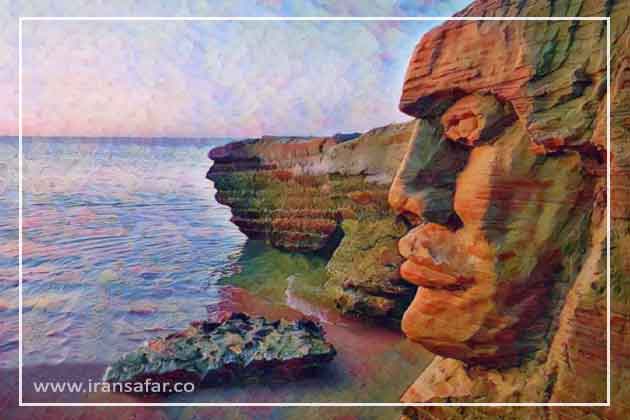
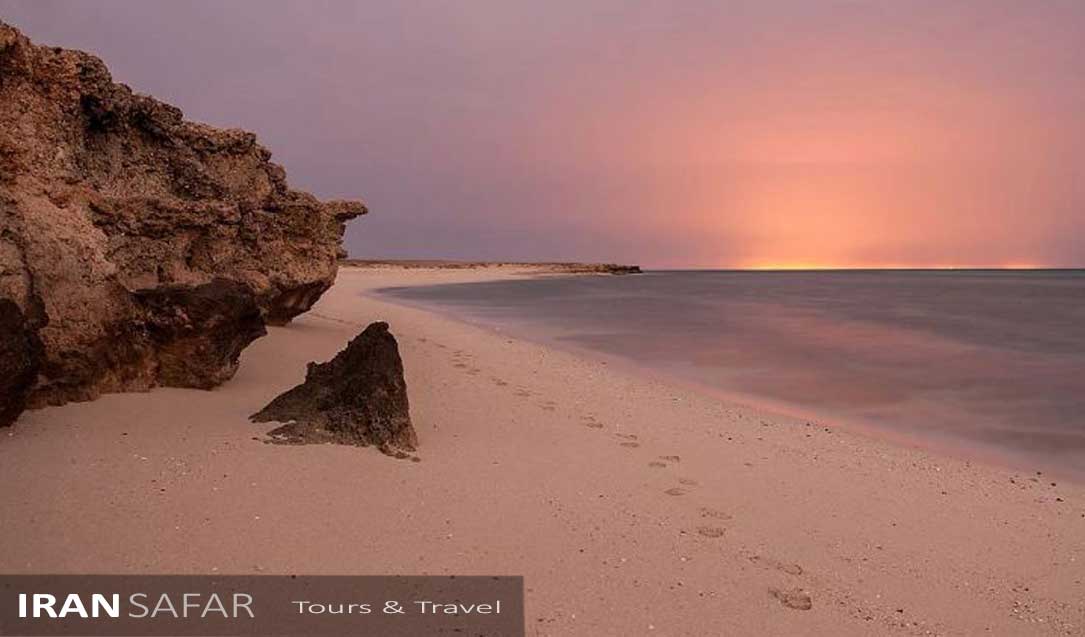

Hengam island is located near Qeshm and you can also visit it during your trip to Qeshm. When you swim in the coral beach of Hemgam Island, you can see the fishes swimming among the corals and sea sponges due to the high transparency of the water. Silver soil is a truly spectacular part of the world. If you want to see a group of dolphins swimming up close, you need to get on a boat and sail along the west coast of the island from Hengam to “Ghil”. There is also a crocodile breeding farm on this island, and a different type of Iranian deer called Jubeir is one of the native animals of Hamaga Island.
Marine tourism is one of the most important capacities of the persian gulf that has remained stagnant due to the lack of suitable sea transportation for tourists and tourism infrastructure in the islands.